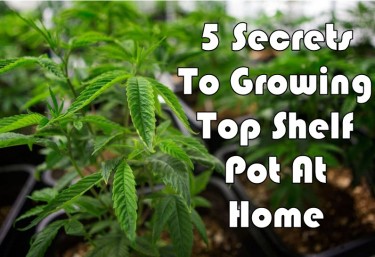
9 Top Tips From Growers For Growing Marijuana At Home
When the global pandemic broke out, most people switched to quirky pastimes to ease their existential anxiety, whether it be knitting, jigsaw puzzles, or sourdough baking.
If you also want to add to your repertoire of distraction methods with great activities that have that homely and calm atmosphere with a twist, consider growing cannabis at home.
Growing marijuana is one of the most rewarding experiences. You can manage the growing industry and start becoming part of it while giving yourself high quality marijuana. To help you grow cannabis at home, here are the tips from the pros:
1. Plan the cultivation correctly
Before you even attempt to germinate seeds, United Strains of America experts suggest that you need to brainstorm strategies wisely. Know beforehand how long it can take for seeds to germinate. Also, remember to determine the right time to grow marijuana and gather enough materials and resources that you will need before planting.
Several factors can determine whether you are producing a large number of potent buds, a limited number of small buds, or something in between.
For success, it is important to know what factors are involved and what they basically entail before cultivation. It would be wise to plan ahead instead of being confused in the middle of the flowering or vegetation phase in order to mitigate disasters and incorporate strategies.
2. Know the nutrients you need
Just like humans, plants also need nutrients in order to grow healthily. When it comes to cannabis, the top three macronutrients you will need are potassium, phosphorus, and nitrogen.
Potassium normally controls the closing and opening of the stomata and at the same time regulates the uptake of CO2. This makes the nutrient essential for evapotranspiration and allows cannabis plants to breathe.
As for phosphorus, cannabis plants use the nutrient for breathing, energy transfer, storage, and photosynthesis. Phosphorus is also important for building amino acids.
On the other hand, nitrogen serves as the main element of the chlorophyll that cannabis needs to convert light from the sun into food. In addition, bacteria fix nitrogen so that cannabis can build proteins and amino acids.
3. Take care of the grow space
Some growers prefer to grow cannabis with their containers on roofs or balconies, while others make a thick wire cage to keep animals and thieves at bay.
Whatever decision you make, keep in mind how tall your cannabis plants need to be. Typically, outdoor marijuana plants can grow up to 10 feet or even beyond, depending on how much you allow them.
Also, make sure your grow space is clean and sanitized. There is an intrinsic risk from pollutants and pests.
For example, a messy grow space can invite mold, pathogens, and harmful bacteria. The best course of action is to create and stick to a bi-weekly cleaning schedule.
4. Provide the required lighting
Cannabis plants require different amounts of light during their flowering and vegetative phases. However, this shouldn’t worry you if you are growing cannabis outdoors. The season and the sun will determine this.
When it comes to growing marijuana indoors, lighting levels should be your priority. Your plants need around 18 hours of lighting in the vegetative phase and around 12 hours in the flowering phase.
Since the amount of light cannabis plants receive is critical, you need to make the indoor grow room light-tight. The best types of lighting you can provide for your plants are:
5. Consider quality water
Not all water is created due to the type and amount of solids dissolved in it. These solids can have a huge impact on the cannabis plant, depending on what they are. For example, house water is a bad idea because of the fluoride and chlorine that providers use to treat it.
While these chemicals may not kill your marijuana plants, you won’t get the right results. For good results, you need to consider investing in a reverse osmosis or filtration system. In this case, remember to change the filters regularly for high quality water.
6. Select seeds
The type and condition of cannabis seeds can determine how the plants grow. Growers should plant marijuana seeds that have not yet germinated or ripened.
Growers should select marijuana seeds that can be cultivated and examined for imperfections.
Unlike clones, feminized seeds are stronger and heartier. This is because they produce more stable taproots that clones cannot replicate.
7. Dealing with humidity and temperature
Even if the surroundings in your home are comfortable enough, there are things that you need to keep an eye on.
Marijuana plants tolerate temperatures between 21 and 29 degrees Celsius during the day and between 13 and 24 degrees Celsius at night.
However, as with many aspects of grow space, temperatures and humidity can vary based on genetics and strains.
8. Think about ventilation
It is important to properly ventilate your grow room. Adequate airflow can prevent mold from growing on the cannabis. In addition, adequate airflow will prevent nutrient burning because if your grow space gets too hot, your plants will drink plenty of water to combat the heat.
As your plants take in more water, they also take in nutrients, increasing the risk of nutrient burnout. Mosquitoes, spider mites, and fungi can thrive in a place with insufficient airflow, but your marijuana plants cannot.
9. Healing and Harvesting
After about 60 days, breeders start paying more attention to the trichomes of their cannabis plants. These trichomes can go from clear to amber in color.
You’ll know it’s time to harvest your cannabis when around 15% of the trichomes turn that color. To harvest your plants, you can start by removing the leaves with trimmers, then finishing the process with the buds before curing them.
Similar to the growth process, curing is also critical. Curing the buds is important to increase their potency and create a smoother smoke.
Take that away!
It’s not difficult to grow cannabis. However, if you want to harvest healthy cannabis plants, extra care can pay off your investment many times over. Whether you want to grow marijuana for sale or as a personal stash, these growing tips will ensure that you get your venture off the ground.
HOME GROWTH TIPS, READ MORE …

5 TIPS FOR GROWING TOP SHELF WEED AT HOME, READ THIS!
OR..

INCREASE THC IN YOUR HOME GROWTH, READ MORE!

Post a comment: